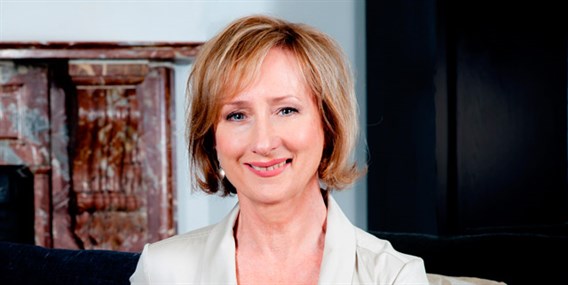-
Large charitable contributions from notable Australians are raising the profile of philanthropy and starting new conversations about the concept of giving.
Generous donations such as the Packer family’s $200 million fund and the late Paul Ramsay’s record $3 billion bequest to his foundation have raised the profile of prominent Australians publicly supporting causes they are passionate about.
"Social responsibility is progressing from being an additional requirement to being part of the core reason for founding a business."
Teresa Zolnierkiewicz, Head of Philanthropy Segment, ANZ
In the latest in our series on the Passion and Science of Giving, ANZ’s Head of Philanthropy Segment Teresa Zolnierkiewicz explains to BlueNotes senior production editor Shane White how giving is a developing industry with a range of participants, from high-net worth philanthropists through to regular givers.
SW: Is the global approach to giving changing?
TZ: Modern philanthropy is about breaking through borders and taking a global mindset to giving.
Travel, commerce and technology are hastening this process. Givers are looking to address needs and create positive change outside of home neighbourhoods.
Organisations such as Global Giving and Universal Giving are connecting us with opportunities abroad.
However, being cautious and carefully vetting overseas charities is essential to know whether your gift is in fact achieving its goals.
SW: We’ve heard philanthropy, especially corporate philanthropy, is becoming more measurement and results focussed. Is there innovation emerging too?
TZ: Contemporary wealth distribution is about more than a traditional gift through something like a will. Individuals and organisations are exploring new financing models to deliver social good.
Financial innovations enhancing charities ledgers include foundations such as Bill and Melinda Gates and the Rockefeller foundation, who are providing loan guarantees rather than direct finance to charities.
Microfinance platforms such as Kiva are distributing millions in microloans to individuals that can’t access traditional finance. Once repaid, the loan is reinvested in the scheme.
It’s also seen in trials such as Social Impact Bonds, where private investors are funding social programs that pay a return if the program achieves the required performance, measured in social outcomes.
Direct distribution of assets is increasing in popularity overseas. Donations of shares, bonds, property, and artworks provides a unique gift to the recipient and in some jurisdictions may attract tax benefits.
SW: We hear too about social responsibility among businesses, how does that fit in a corporate enterprise?
TZ: Social responsibility is progressing from being an additional requirement to being part of the core reason for founding a business.
Organisations such as Bcorp support businesses to be a force for good, merging social responsibility initiatives with financial profit into their DNA. The goal is to grow business and improve lives, communities and the environment – all at the same time.
Expect to see more organisations like Zambrero emerge. Zambrero is a Mexican food restaurant with franchises across Australia.
It contributes a plate of food to developing nations for every bowl or burrito purchased in their stores. Since inception in 2005, 4.2 million meals have been donated.
SW: Another interesting idea is a ‘giving circle’. What are Giving Circles?
TZ: Giving Circles are well underway in the US and gaining favour here. The concept brings together a number of individuals interested in a specific issue.
Many donations are pooled to achieve a larger impact: 100 people in a Giving Circle contributing $1000 to a single cause can have a larger impact than less-organised donations and the benefit to the lucky organisation multiplies.
Causes such as women’s rights, gay and lesbian (LGBTI) interests, and others are finding favour. Organisations such as Impact 100 and Australian Jewish Funders are emerging and established examples of giving circles.
SW: How is modern tech like social media helping philanthropy develop?
TZ: Technology is changing the way we give by facilitating and empowering us about choice in giving.
Its power was demonstrated in the recent South Australian bushfires. Injured Australian wildlife was supported by citizens from across the globe after a plea for ‘koala mittens’ went viral. Organisations were inundated with joey pouches and mittens for burnt koala paws.
Many social media flash trends like the ice bucket challenge create pause for thought and hopefully constructive conversations. Other trends are more enduring such as online communities for causes such as Movember.
Even traditional charities like the cancer council are jumping on board: #nomakeupselfie. Truth is, there is scope to exploit social media and digital tools for good – if you have the creativity.
Teresa Zolnierkiewicz is ANZ’s Head of Philanthropy Segment. Connect with Teresa on Twitter - @TeresaKZol.
The views and opinions expressed in this communication are those of the author and may not necessarily state or reflect those of ANZ.
EDITOR'S PICKS
-
In this second of our in-depth series on the Passion and Science of Giving, internet entrepreneur and dedicated philanthropist Daniel Petre delivers a forthright analysis of philanthropy in Australia.
18 September 2014 -
The philanthropic universe is tilting. There are no longer clear lines between business, charities, not-for-profits and those who give. Those groups receiving funds realise they are in a competitive market, they must be able to demonstrate the difference they make.
23 October 2014 -
In the fourth of our series on the Passion and Science of Giving, Jacki Zehner explains how she chooses which organisations to support and how giving in any form can have an impact.
1 December 2014
